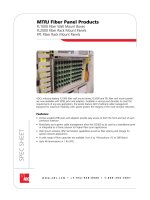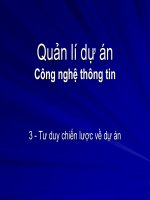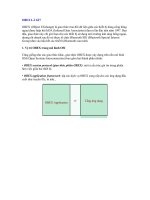Tài liệu Internet Learning Solutions Group pptx
Bạn đang xem bản rút gọn của tài liệu. Xem và tải ngay bản đầy đủ của tài liệu tại đây (76.93 KB, 6 trang )
PIC –3/21/2002 3:49 PM 1 of 6
I
I
n
n
t
t
e
e
r
r
n
n
e
e
t
t
L
L
e
e
a
a
r
r
n
n
i
i
n
n
g
g
S
S
o
o
l
l
u
u
t
t
i
i
o
o
n
n
s
s
G
G
r
r
o
o
u
u
p
p
P
P
r
r
o
o
d
d
u
u
c
c
t
t
I
I
n
n
f
f
o
o
r
r
m
m
a
a
t
t
i
i
o
o
n
n
C
C
h
h
e
e
c
c
k
k
l
l
i
i
s
s
t
t
(
(
P
P
I
I
C
C
)
)
P
P
r
r
o
o
d
d
u
u
c
c
t
t
I
I
n
n
f
f
o
o
r
r
m
m
a
a
t
t
i
i
o
o
n
n
(
(
E
E
P
P
D
D
-
-
P
P
M
M
)
)
Name of course or offering: Cisco IP Telephony 3.2
Course acronym (must be unique, up to 5 letters, no #s): CIPT
Version: 3.2
FCS Date (PLM CM) 26 March 2002
LOB: Enterprise
Offering type: course If other, please specify:
Delivery method: ILT Cisco TV V-Labs VOD WBT Virtual classroom
Self study type: CD Book Tape Video
Duration if WBT in hours:
Duration if ILT in days 5 and hours: 40
Does course replace existing one? Yes No (PLM-CM)
If yes, provide course name and/or acronym: CIPT 3.1
EOL date(PLM-CM) 24 May 2002
A
A
s
s
s
s
e
e
s
s
s
s
m
m
e
e
n
n
t
t
I
I
n
n
f
f
o
o
r
r
m
m
a
a
t
t
i
i
o
o
n
n
(EPD – PM,
i
i
f
f
a
a
p
p
p
p
l
l
i
i
c
c
a
a
b
b
l
l
e
e
)
)
Sylvan test number: 9EO-402
COLT test number:
Is this product a part of these Career Certifications?
CCNA CCNP CCDA CCDP CCAP CCIE
T
T
r
r
a
a
i
i
n
n
t
t
h
h
e
e
T
T
r
r
a
a
i
i
n
n
e
e
r
r
(
(
I
I
R
R
P
P
)
)
Train the Trainer Required? Yes No
If yes, TTT date: January 14, 2002 AM session, January 15, 2002 PM session via virtual classroom
(Placeware). (Existing CIPT 3.1 Instructors)- 1 day update
TTT registration information:
Instructor prerequisites (including certifications and background knowledge):
-CCSI in good standing
-TTT attendance (requires prior CIPT certification) or
-Course attendance and completion of CIPT certification exam at instructor level
T
T
a
a
r
r
g
g
e
e
t
t
A
A
u
u
d
d
i
i
e
e
n
n
c
c
e
e
(
(
E
E
P
P
D
D
-
-
P
P
M
M
)
)
Please describe who should attend this course
Other If other, please describe the audience: Channel Partner Resellers to be CIPT certified and
End Customer Telephony Engineers.
S
S
t
t
u
u
d
d
e
e
n
n
t
t
P
P
r
r
e
e
r
r
e
e
q
q
u
u
i
i
s
s
i
i
t
t
e
e
s
s
(
(
E
E
P
P
D
D
-
-
P
P
M
M
)
)
(Note: This field has a limit of 2000 characters.)
To fully benefit from CIPT, you should already possess certain prerequisite skills. These skills can be
gained from completing the Internetworking Technology Multimedia (ITM) CD-ROM or through work
experience. These prerequisites are outlined below. You should have a working knowledge of the
following:
CCNA Certification
PIC –3/21/2002 3:49 PM 2 of 6
Telephony and IP telephony basic concepts
Building VoIP networks—gained from the Cisco course, Cisco Voice Over Frame Relay, ATM, and IP v2.1
(CVOICE)
C
C
o
o
u
u
r
r
s
s
e
e
O
O
b
b
j
j
e
e
c
c
t
t
i
i
v
v
e
e
s
s
(
(
E
E
P
P
D
D
-
-
P
P
M
M
)
)
Please list the 6-8 course objective (Bulleted)
After completing this course, the student should be able to:
Upon completion of this course, you will be able to perform the following high-level tasks:
Given the components of a Cisco IP telephony (CIPT) solution, identify and describe the CIPT
architecture, hardware, and software.
Given hardware and software of a CIPT network solution, install one of the three recommended CIPT
deployment models.
Given a Cisco CallManager server, access the online administration guide to configure CIPT components
within Cisco CallManager administration.
Given an installed Cisco CallManager server, enable and use the tools in the Cisco CallManager server to
troubleshoot the CIPT deployment solutions.
C
C
o
o
u
u
r
r
s
s
e
e
D
D
e
e
s
s
c
c
r
r
i
i
p
p
t
t
i
i
o
o
n
n
(
(
E
E
P
P
D
D
-
-
P
P
M
M
)
)
(Note: This field has a limit of 2000 characters.)
CIsco IP Telephony course focuses on the Cisco CallManager product and the devices that register to
Cisco CallManager to complete a Cisco IP Telephony solution. The course is 55% hands-on laboratory
exercises that challenge to the student to install, configure and monitor a Cisco CallManager cluster of
CIPT components.
The course is filled with best practices and deployment tips gathered from CIPT technical marketing
engineers. The course als provides students with job aids and configuration guides to take on site or back
to a lab environment to test deployment issue prior to deployments.
During the week, the student will have opportunities to install and configure a Cisco IP Telephony solution
and will work with a team to design and build a supported CIPT deployment model.
C
C
o
o
u
u
r
r
s
s
e
e
O
O
u
u
t
t
l
l
i
i
n
n
e
e
(
(
E
E
P
P
D
D
–
–
P
P
M
M
)
)
PIC –3/21/2002 3:49 PM 3 of 6
I
I
n
n
t
t
r
r
o
o
d
d
u
u
c
c
t
t
i
i
o
o
n
n
M
M
o
o
d
d
u
u
l
l
e
e
1. Course Intro
2. AVVID/CIPT intro
C
C
i
i
s
s
c
c
o
o
C
C
a
a
l
l
l
l
M
M
a
a
n
n
a
a
g
g
e
e
r
r
M
M
o
o
d
d
u
u
l
l
e
e
3. Define the CCM application
3.1. Layers of Cisco CallManager
3.2. Operating System, Database, Call Processing (Protocols)
3.3. Supported Hardware
3.3.1. Installation CD’s
3.3.2. Installation
3.3.3. Device Weights
4. Cluster
4.1. Supported user numbers per Clusters
4.2. Intra cluster communication
4.2.1. Database
4.2.2. H323 (Device Registration)
4.3. Backup database
4.4. Services installed (Publisher vs. Subscriber)
4.5. Upgrade and restore procedures.
5. Deployment Models
5.1. Single Site
5.2. Multi-site
5.3. Distributed Call Processing
5.4. Centralized Call Processing.
D
D
e
e
v
v
i
i
c
c
e
e
s
s
M
M
o
o
d
d
u
u
l
l
e
e
6. Phones
6.1. Models of Phones (79xx, CTI, H.323 Client)
6.2. Phone templates
6.3. Boot/registration process
6.3.1. Auto-registration
6.3.1.1.Configuration
6.3.1.2.Dependencies in CCM Admin
6.4. Call Processing
6.5. Using the phone features (ie. Conference, transfer)
7. Catalyst Switches
7.1.1. Models
7.1.2. Power to the phones
7.1.3. Voice Vlans
7.1.4. CoS and ToS
8. Gateways and Gatekeeper
8.1. MGCP vs. H323
8.2. Digital vs. Analog
8.3. Cluster to PSTN
8.4. PSTN to Cluster
8.5. Just gatekeeper
PIC –3/21/2002 3:49 PM 4 of 6
8.6. Anonymous Device
9. CTI Route Point
D
D
i
i
a
a
l
l
P
P
l
l
a
a
n
n
M
M
o
o
d
d
u
u
l
l
e
e
10. Simple Dial Plan (3-tiers)
10.1. Route Pattern
10.1.1. Wildcards
10.2. Route Group
10.3. Route List
11. Complex
11.1. Route Filters
11.2. Transformations
11.3. Digit Discard Instructions
11.4. Translations
12. Class of Service
12.1. Partition
12.2. Calling Search Space
F
F
e
e
a
a
t
t
u
u
r
r
e
e
s
s
,
,
U
U
s
s
e
e
r
r
s
s
a
a
n
n
d
d
S
S
e
e
r
r
v
v
i
i
c
c
e
e
s
s
M
M
o
o
d
d
u
u
l
l
e
e
13. Supplementary Services
13.1. Media Resources
13.1.1. Media Termination Point
13.1.2. Conferencing
13.1.3. Transcoding
13.1.4. Music on Hold
13.2. Media Resource Management
13.2.1. Media Resource Manager
13.2.2. Media Resource Groups and Lists
14. Features
14.1. Call Park
14.2. Call Pickup
14.3. Cisco IP Phone Services
15. Preparing the phone for a User
15.1. Creating a User and association with devices
15.2. External Phone Number Mask
15.3. Display
15.4. Date and Time
15.5. Lines and Speed Dials
A
A
p
p
p
p
l
l
i
i
c
c
a
a
t
t
i
i
o
o
n
n
s
s
a
a
n
n
d
d
T
T
o
o
o
o
l
l
s
s
M
M
o
o
d
d
u
u
l
l
e
e
16. Cisco IP Softphone
17. CRA
17.1. Auto Attendant
17.2. IVR
17.3. Extension Mobility
18. Cisco WebAttendant
19. Cisco Unity
20. IPCC
PIC –3/21/2002 3:49 PM 5 of 6
21. Bulk Administration Tool
21.1. TAPs
22. QoS Tools
22.1. LAN
22.2. WAN
22.3.
S
S
e
e
c
c
u
u
r
r
i
i
t
t
y
y
a
a
n
n
d
d
E
E
9
9
1
1
1
1
23. Security
23.1. Network Security
23.2. Cisco CallManager Security
23.2.1. Services
23.2.2. IDS
24. E911
24.1. Definition
24.2. Network Topology
24.3. Cisco ER
24.4. Configuration
M
M
o
o
n
n
i
i
t
t
o
o
r
r
i
i
n
n
g
g
a
a
n
n
d
d
T
T
r
r
o
o
u
u
b
b
l
l
e
e
s
s
h
h
o
o
o
o
t
t
i
i
n
n
g
g
M
M
o
o
d
d
u
u
l
l
e
e
25. Windows 2000 Tools
25.1. Event Viewer
25.2. Performance Monitor
26. Cisco CallManager Serviceability Tools
26.1. Alarms
26.1.1. Definitions
26.2. Trace
26.2.1. Trace output examples
26.2.2. Need labs
26.3. Admin Serviceability Tool (AST)
26.4. CDR Analysis Reporting (CAR)
27. Cisco Works 2000
A
A
p
p
p
p
e
e
n
n
d
d
i
i
x
x
E
E
n
n
d
d
U
U
s
s
e
e
r
r
E
E
x
x
p
p
e
e
r
r
i
i
e
e
n
n
c
c
e
e
M
M
o
o
d
d
u
u
l
l
e
e
28. Using the Phone.
28.1. Changing and saving settings
28.1.1. Ringer options
28.1.2. Volume
28.1.2.1. Ringer
28.1.2.2. Speaker
28.2. Answering a Call
28.2.1. New call
28.2.2. Call Waiting
28.3. Conference
28.4. Transfer
28.5. Call Park
28.6. Call Pickup (Group pickup)
28.7. Voice Mail (Messages Button), external









